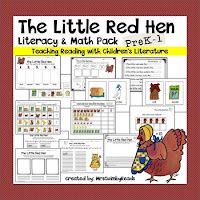Some Food for Thought
 Preschoolers are wonderful people.... they are just that ... FULL of wonder! If you listen, I mean really listen to your preschooler, you will hear comments that show evaluation and insights that rise high in the taxonomy of thinking. and most preschoolers CREATE! They make things in the sand, they create with play-doh and clay, they make things with food. It's a nice thought, don't you think, that these children are so capable! Remembering this when reading with your preschooler is important! Don't dumb it down, let them rise to the top of the pyramid!
Preschoolers are wonderful people.... they are just that ... FULL of wonder! If you listen, I mean really listen to your preschooler, you will hear comments that show evaluation and insights that rise high in the taxonomy of thinking. and most preschoolers CREATE! They make things in the sand, they create with play-doh and clay, they make things with food. It's a nice thought, don't you think, that these children are so capable! Remembering this when reading with your preschooler is important! Don't dumb it down, let them rise to the top of the pyramid!
When you are reading The Three Little Pigs or The Little Red Hen, your preschooler can certainly evaluate which little pig was the wisest and why; and if the dog, pig and goose are lazy characters in The Little Red Hen.
Children can make evaluations about if the little red hen is justified in eating the bread all by herself. These thinking skills start early on in book reading. Ask questions, talk about the books with your preschooler and read books everyday. It is this activity and the talk about reading that begins the literacy journey on a path of success.
Children can make evaluations about if the little red hen is justified in eating the bread all by herself. These thinking skills start early on in book reading. Ask questions, talk about the books with your preschooler and read books everyday. It is this activity and the talk about reading that begins the literacy journey on a path of success.
Ask yourself "why do I read?" To learn, to be entertained, to view another's point of view. When you remember those 3 essential reasons for reading and bring those elements to your reading experiences with your child; your child will be at a wonderful beginning place when entering school.
Here are 5 easy practices you might include when reading with your preschooler:
1. Read Every Day - reading everyday shows your child that you value reading; it also teaches your child that reading is an enjoyable activity. We tend to do things that we enjoy more often. When we engage in an activity more often, we get better at it!
2. Choose Books Together - going to the library and the book store together to choose books allows your child to learn this important practice of becoming a reader. Look at the covers, ask questions, peruse the pages, read snippets, look at the back. Choosing books is a great way to find out that there are many, many subjects in the world to read about. That book choice can be personal; that book choice is the beginning of reading. One book leads to another.
3. Talk about the books, stories and characters - when reading with your child, talking about the books is essential. Do you like the book? Why or why not? What events did you find funny, sad, happy ? What characters do you admire? What characters would you like to be like? Why or why not? Talk, Talk, Talk. Talking and writing about reading are important to understanding and comprehension of the text. We talk about what we learned, what we think, what the author's message is. Talking shows thinking.
4. Compare events and characters - when we talk about the books, usually we make comparisons about events and characters in the books to our own events in life and characters we meet. Comparing and contrasting can help us form our opinions and thoughts. What do we what to do? Who do we want to be with? Who do we wish to be?
5. Make text connections to your child's world - and making these connections between our books and reading and our own lives can be the pearl in the oyster.
Why read? Well, to become a smarter or a nicer person!
 |
| Fun Pages for Writing About The Little Red Hen HERE |


 |
| Find Reader Response Pages HERE |
 |
| Find Listen, Draw and Follow Directions HERE |




